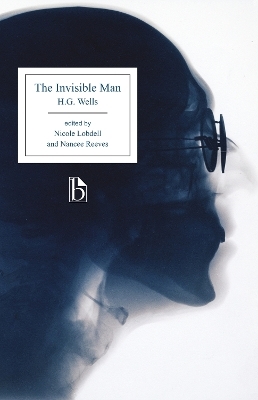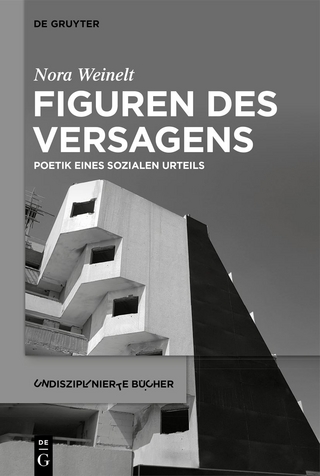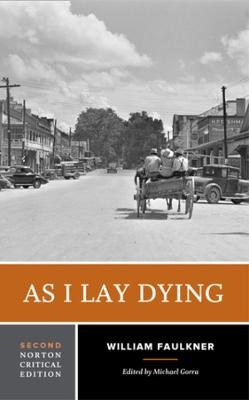
The Invisible Man
Broadview Press Ltd (Verlag)
978-1-55481-273-8 (ISBN)
This edition includes a valuable collection of the nineteenth-century narratives of invisibility that inspired Wells’s novel, as well as excerpts of Wells’s nonfiction writings on education and class. Additional appendices situate the novel in its late-Victorian scientific and technological contexts, including material on radio waves and x-rays.
Nicole Lobdell is a Visiting Assistant Professor of English at DePauw University. Nancee Reeves is a Lecturer in the Department of English at the University of Georgia.
Appendix A: The Four Endings of The Invisible Man
a) Pearson’s Weekly, August 1897
b) Pearson, First Edition, September 1897
c) Pearson, Second Edition, November 1897
d) Arnold, New York Edition, November 1897
Appendix B: Invisibility in Nineteenth-Century Fiction
a) James Dalton. From The Invisible Gentleman. London: Edward Bull, 1833. I: 61-72.
b) Fitz-James O’Brien. From “What Was It? A Mystery” Harper’s Magazine (March 1859): 504-9.
c) W. S. Gilbert, “The Perils of Invisibility” (1869). More “Bab” Ballads: Much Sound and Little Sense. London: Routledge, 1872. 178-183.
d) Edward Page Mitchell. From “The Crystal Man” The Sun (30 January 1881)
e) Charles H. Hinton. From “Stella.” Stella and An Unfinished Communication: Studies of the Unseen. London: Swan Sonnenschein & Co, 1895. 55-56.
f) Katherine Kip. From “My Invisible Friend” The Black Cat (February 1897): 9-21.
Appendix C: Reviews of The Invisible Man
a) From “Mr. Wells’s New Stories.” Saturday Review of Politics, Literature, Science, and Art (18 September 1897), lxxxiv. 322.
b) Arnold Bennett. “The Invisible Man.” [Woman 405 (29 September 1897): 9] Arnold Bennett and H.G. Wells: A Record of a Personal and Literary Friendship. Ed. Harris Wilson. Urbana: U of Illinois P, 1960. 258-59.
c) Letter from H.G. Wells replying to Arnold Bennett (October 1897)
d) Clement Shorter. From “The Invisible Man.” The Bookman [London] (October 1897): 19-20.
e) Claudius Clear. From “The Fantastic Fiction; Or, ‘The Invisible Man.’” The Bookman [New York] 6 (November 1897): 250-51.
f) “H.G. Wells’s ‘The Invisible Man.’” The New York Times (25 December 1897): BR15.
Appendix D: Wells and Friends on The Invisible Man
a) Extract from Letter, H.G. Wells to James B. Pinker (Received 16 April 1896).
b) Extract from Letter, H.G. Wells to James B. Pinker (Undated).
c) H.G. Wells to James B. Pinker (2 May 1897).
d) Joseph Conrad to H.G. Wells (4 December 1898). From Joseph Conrad: Life and Letters. Ed. G. Jean-Aubry. New York: Doubleday, 1927. 259-60.
Appendix E: Biological Context
a) J. Lockhart Gerson, from “On the ‘Invisible Blood Corpuscles’ of Norris.” Journal of Anatomy and Physiology: Normal and Pathological. Macmillan and Co.: London and Cambridge, 1882.
b) From W. Robinson, “Notes on Some Albino Birds Presented to the U.S. National Museum, with Some Remarks on Albinism.” Proceedings of The United States National Museum, volume 11, issue 733, 1889.
c) From H.G. Wells, “Popular Feeling and the Advancement of Science. Anti-Vivisection.” The Way the World is Going: Guesses and Forecasts of the Years Ahead. London: Ernest Benn, 1928. 222-227.
Appendix F: Technology Contexts: Röntgen Rays and Radio Waves
a) Wilhelm Conrad Röntgen. From “On a New Kind of Rays” Trans. Arthur Stanton. Nature 53 (23 January 1896): 274-276.
b) H.J.W. Dam. From “A Wizard of To-Day.” Pearson’s Magazine. 1 (April 1896): 413-19.
c) George Griffith, “A Photograph of the Invisible” Pearson’s Magazine 1 (April 1896) 378-80.
d) H.J.W. Dam “The New Telegraphy” The Strand Magazine 13 (March 1897): 273-80.
Appendix G: Wells on Class and Society
a) H.G. Wells. From Anticipations of the Reaction of Mechanical and Scientific Progress Upon Human Life and Thought. United Kingdom; Chapman and Hall, 1901: 229-30.
b) H.G. Wells. From A Modern Utopia. London: Chapman and Hall, 1905. 265-70.
c) H.G. Wells. From “Of the New Reign.” An Englishman Looks at the World: Being a Series of Unrestrained Remarks upon Contemporary Matters. London: Cassel & Co, 1914. 28-32.
d) H.G. Wells. From Experiment in Autobiography: Discoveries and Conclusions of A Very Ordinary Brain (since 1866). Philadelphia and New York: J.B. Lippincott, 1934: 556.
| Erscheinungsdatum | 29.09.2018 |
|---|---|
| Sprache | englisch |
| Maße | 140 x 216 mm |
| Gewicht | 263 g |
| Themenwelt | Literatur ► Klassiker / Moderne Klassiker |
| Geisteswissenschaften ► Sprach- / Literaturwissenschaft ► Anglistik / Amerikanistik | |
| Geisteswissenschaften ► Sprach- / Literaturwissenschaft ► Literaturgeschichte | |
| Geisteswissenschaften ► Sprach- / Literaturwissenschaft ► Literaturwissenschaft | |
| ISBN-10 | 1-55481-273-9 / 1554812739 |
| ISBN-13 | 978-1-55481-273-8 / 9781554812738 |
| Zustand | Neuware |
| Haben Sie eine Frage zum Produkt? |
aus dem Bereich


